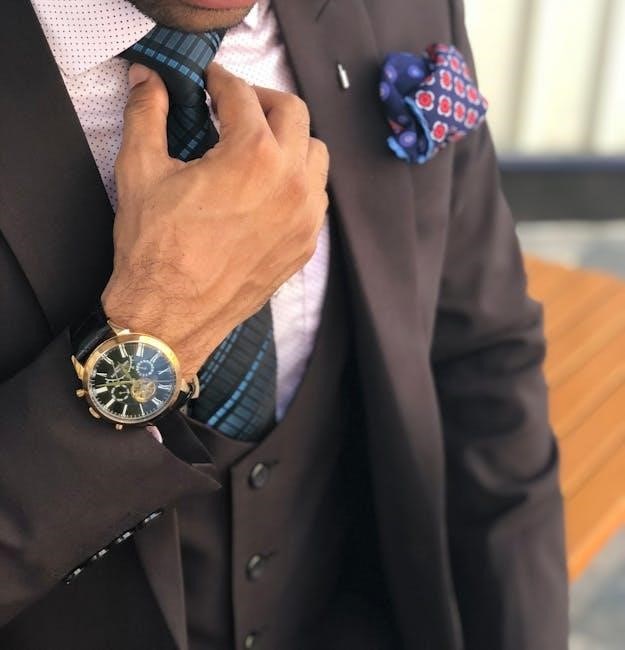Understanding the Portuguese Water Dog’s Coat
The Portuguese Water Dog boasts a unique coat, available in curly and wavy types, both hypoallergenic. Regular grooming is essential to maintain their distinctive appearance and prevent matting.
1.1. Types of Coats: Curly and Wavy
The Portuguese Water Dog features two distinct coat types: curly and wavy. The curly coat is characterized by tight, compact curls that lie close to the body, while the wavy coat has flowing, loose waves with a silky texture. Both coats are hypoallergenic and shed minimally, making them ideal for owners with allergies. The curly coat requires more frequent grooming to prevent matting, whereas the wavy coat is slightly easier to maintain but still needs regular attention to keep it healthy and looking its best.
1.2. Characteristics of Each Coat Type
The curly coat is tight and compact, lying close to the body, while the wavy coat features loose, flowing waves with a silky texture. Both coat types are hypoallergenic, shedding minimally. The curly coat requires frequent grooming to prevent matting, whereas the wavy coat is slightly easier to maintain but still needs regular attention. Both coats are resilient and adaptable, with the curly coat offering a more uniform appearance and the wavy coat providing a sleek, natural look. Consistent grooming is essential to keep either coat type healthy and tangle-free.

Preparing for Grooming
Before grooming, gather essential tools like brushes, clippers, and combs. Set up a comfortable grooming station with non-slip surfaces and ensure your dog is calm and ready.
2.1. Necessary Tools and Equipment
To groom your Portuguese Water Dog effectively, you’ll need specific tools. A high-quality slick brush or pin brush is essential for detangling, while a wide-tooth comb helps with matting. Curly coats may require a detangling spray to ease knots. Nail clippers or grinders are crucial for trimming nails every 4-6 weeks. A pair of sharp scissors or thinning shears is needed for trimming around the eyes, ears, and paws. Additionally, a 10-blade clipper with combs is ideal for body trims, and a non-slip table or mat ensures stability during sessions.

2.2. Setting Up a Grooming Station
Creating a well-organized grooming station is vital for efficient and stress-free sessions with your Portuguese Water Dog. Start by selecting a quiet, non-slip surface, such as a rubber mat or a grooming table, to ensure your dog’s stability and comfort. Position the area near natural light to easily spot mats or tangles. Keep all grooming tools, like brushes, clippers, and nail trimmers, within easy reach using a storage caddy or nearby table. Ensure your dog feels secure by using a grooming arm or restraint if needed. Finally, have treats or toys on hand to keep your dog calm and reward good behavior during the process.
2.3. Tips for Keeping Your Dog Calm and Comfortable
Creating a calm grooming environment is key to ensuring your Portuguese Water Dog’s comfort. Start sessions when your dog is relaxed, avoiding times when they are overly energetic or stressed. Use positive reinforcement, such as treats or praise, to associate grooming with positive experiences. Keep the area quiet and free from distractions, and consider using a non-slip mat or table for stability. Gradually introduce grooming tools, allowing your dog to familiarize themselves with the sights and sounds. Patience and consistency will help your dog remain calm and cooperative during grooming sessions.

Bathing Your Portuguese Water Dog
Bathing is essential for maintaining your Portuguese Water Dog’s coat health. Always rinse thoroughly to remove dirt and debris, especially after swimming, to prevent skin issues and matting.
3.1. Step-by-Step Instructions for a Successful Bath
Start by brushing your Portuguese Water Dog thoroughly to remove tangles and mats. Wet the coat with lukewarm water, then apply a mild dog shampoo, focusing on dirty areas. Lather well, rinse thoroughly to prevent skin irritation, and repeat if necessary. Apply conditioner, especially on curly coats, to enhance manageability. Rinse again until water runs clear. Gently pat dry with a towel, avoiding rubbing to prevent matting. Follow up with a blow dryer on a low setting or let air dry to maintain coat health and prevent tangling.
3.2. Recommended Shampoo and Conditioner

For Portuguese Water Dogs, use a mild, hypoallergenic shampoo suitable for their curly or wavy coat. Opt for a pH-balanced formula to maintain skin health. For curly coats, a moisturizing shampoo and conditioner are essential to prevent dryness and frizz. Avoid harsh chemicals that can strip natural oils. For dogs with sensitive skin, oatmeal or aloe vera-based products are ideal. Always rinse thoroughly to remove residue, ensuring the coat remains healthy and manageable. Regular conditioning helps detangle and enhance the coat’s natural texture.
3.3. Drying Techniques and Tips
After bathing, gently pat your Portuguese Water Dog with a microfiber towel to remove excess water. Avoid rubbing vigorously, as this can cause friction and tangles. Use a low-heat dryer on a cool setting, especially for curly coats, to prevent overheating. For wavy coats, air-drying in a cool, well-ventilated area is ideal. Never use hot blow dryers, as they can damage the coat. Ensure the coat is completely dry to prevent matting and tangling. Regular drying helps maintain the coat’s health and appearance, particularly after swimming or bathing.
Trimming and Styling
Trimming and styling are crucial for maintaining the Portuguese Water Dog’s unique appearance. Regular trims prevent matting and help customize their look to suit their active lifestyle.
4.1. Popular Haircut Styles: Retriever Trim and Lion Trim
The Portuguese Water Dog’s grooming includes two iconic styles: the Retriever Trim and the Lion Trim. The Retriever Trim is practical, ensuring ease of movement in water, with a uniformly short coat. The Lion Trim creates a distinctive look, featuring a full mane on the chest and head, while the rear is clipped short. Both styles highlight the breed’s natural athleticism and charm, making them popular choices for owners seeking functionality and aesthetic appeal.
4.2. Nail Trimming and Ear Cleaning
Nail trimming and ear cleaning are essential for the Portuguese Water Dog’s hygiene. Trim nails every four to six weeks to prevent overgrowth, which can cause discomfort. For ear cleaning, use a gentle dog ear cleaner to remove dirt and wax, ensuring infection prevention. Regular attention to these areas helps maintain overall health and comfort, preventing potential issues like infections or pain during movement.

The Importance of Regular Grooming
Regular grooming is crucial for maintaining the Portuguese Water Dog’s health, strengthening the bond with their owner, and preventing coat matting and skin issues.
5.1. Health Benefits: Skin and Coat Health
Regular grooming significantly benefits the Portuguese Water Dog’s skin and coat health by preventing matting and tangling, which can cause skin irritation and discomfort. Proper brushing and combing remove dirt and debris, reducing the risk of infections. Bathing and rinsing thoroughly, especially after swimming, eliminates harmful substances like salt and chlorine, which can dry out the coat and irritate the skin. Additionally, trimming excess hair, particularly around the ears and paws, improves airflow and reduces moisture buildup, fostering healthier skin and a lustrous, well-maintained coat.

- Prevents skin infections and irritation caused by matting.
- Removes dirt and debris that can harm the coat and skin.
- Keeps the coat shiny and healthy by removing dead hair.
- Reduces moisture buildup in sensitive areas like ears and paws.
5.2. Bonding with Your Dog
Grooming is more than just maintenance—it’s a chance to deepen your bond with your Portuguese Water Dog. Regular sessions create trust and comfort, as your dog learns to rely on you for care. Positive reinforcement, like treats and praise, makes grooming a positive experience. Over time, your dog will associate these moments with affection and attention, strengthening your relationship. This shared routine fosters loyalty and mutual understanding, making grooming a meaningful way to connect with your furry companion.
- Builds trust and comfort through consistent care.
- Encourages positive associations with grooming.
- Strengthens the bond between you and your dog.
5.3. Preventing Matting and Tangling
Regular grooming is crucial to prevent matting and tangling in your Portuguese Water Dog’s coat. Daily brushing and combing help redistribute natural oils and detangle fur, especially in curly or wavy coats. Use a slicker brush or wide-tooth comb to gently work through knots, starting from the ends. For stubborn mats, apply a detangling spray and carefully tease them out. Regular baths and trims also reduce the risk of matting. Consistent care ensures a healthy, tangle-free coat and prevents skin irritation or infections caused by matted fur.

- Brush and comb daily to prevent knots.
- Use proper tools for detangling curly or wavy coats.
- Regular trims and baths reduce matting risks.

Advanced Grooming Techniques
Mastering advanced grooming involves precision scissoring, clipper work, and detailed trimming for specific styles. Use high-quality tools and shampoos to enhance coat health and texture, ensuring professional results.
6.1. Dematting and Brushing
Dematting and brushing are crucial for Portuguese Water Dogs, especially for curly and wavy coats prone to matting. Start by gently working out loose mats with a slicker brush or dematting rake. For stubborn tangles, use a detangling spray and carefully tease them apart. Always brush from the outer coat inward, avoiding pulling or tugging, which can cause discomfort. Regular brushing prevents matting and tangling, ensuring the coat remains healthy and well-maintained. Use a pin brush for finishing touches to achieve a smooth, polished look.
6.2. Teeth Brushing and Dental Care
Regular teeth brushing is essential for maintaining your Portuguese Water Dog’s dental health. Use a dog-specific toothbrush and toothpaste to gently remove plaque and tartar, focusing on areas where the teeth and gums meet. Brushing daily or every other day helps prevent bad breath and gum disease. Monitor for signs of dental issues, such as yellowing teeth or red gums. Incorporate dental chews or toys to supplement brushing. Avoid hard toys that could damage teeth. Regular dental checkups with a vet are crucial for maintaining overall oral health and preventing complications.
Grooming Frequency and Maintenance
Regular grooming is crucial for the Portuguese Water Dog’s health and appearance. Brush daily, bathe every 2-3 weeks, trim every 4-6 weeks, and maintain nails and ears as needed to prevent issues.
7.1; Brushing and Combing Schedule
Portuguese Water Dogs require daily brushing to prevent matting and tangling, especially in curly coats. Use a high-quality slicker brush or comb to detangle thoroughly. For wavy coats, brushing every other day suffices, but curly coats need attention daily to maintain their texture. Regular brushing also distributes natural oils, promoting a healthy, lustrous coat. During shedding seasons or after swimming, increase brushing frequency to remove loose hair and prevent knots. Consistency is key to keeping their coat manageable and preventing painful matting.
7.2. Bathing and Drying Frequency
Portuguese Water Dogs should be bathed every 2 to 3 weeks, or as needed, especially after swimming or getting dirty. Over-bathing can strip their coat of natural oils. After bathing, gently pat dry with a microfiber towel, then use a blow dryer on a low setting to prevent matting, particularly in curly coats. Wavy coats may air-dry but still need thorough drying to avoid skin issues. Regular rinsing after water activities is crucial to remove salt or chlorine, ensuring coat and skin health. Consistency in drying prevents matting and keeps their coat in optimal condition.
7.3. Trimming and Hairstyling Schedule
Portuguese Water Dogs require trimming every 4 to 6 weeks to maintain their coat’s health and appearance. Popular styles like the Retriever Trim and Lion Trim are recommended, with the Retriever Trim being more practical for active dogs. Use a #10 blade for a close cut and combs for an even finish. Scissoring can create a natural, flowing look. Curly coats may need more frequent touch-ups to prevent matting, while wavy coats can go longer between sessions. Regular trimming ensures comfort and style, especially for water activities. Professional grooming is advised for intricate styles and to prevent skin irritation.
